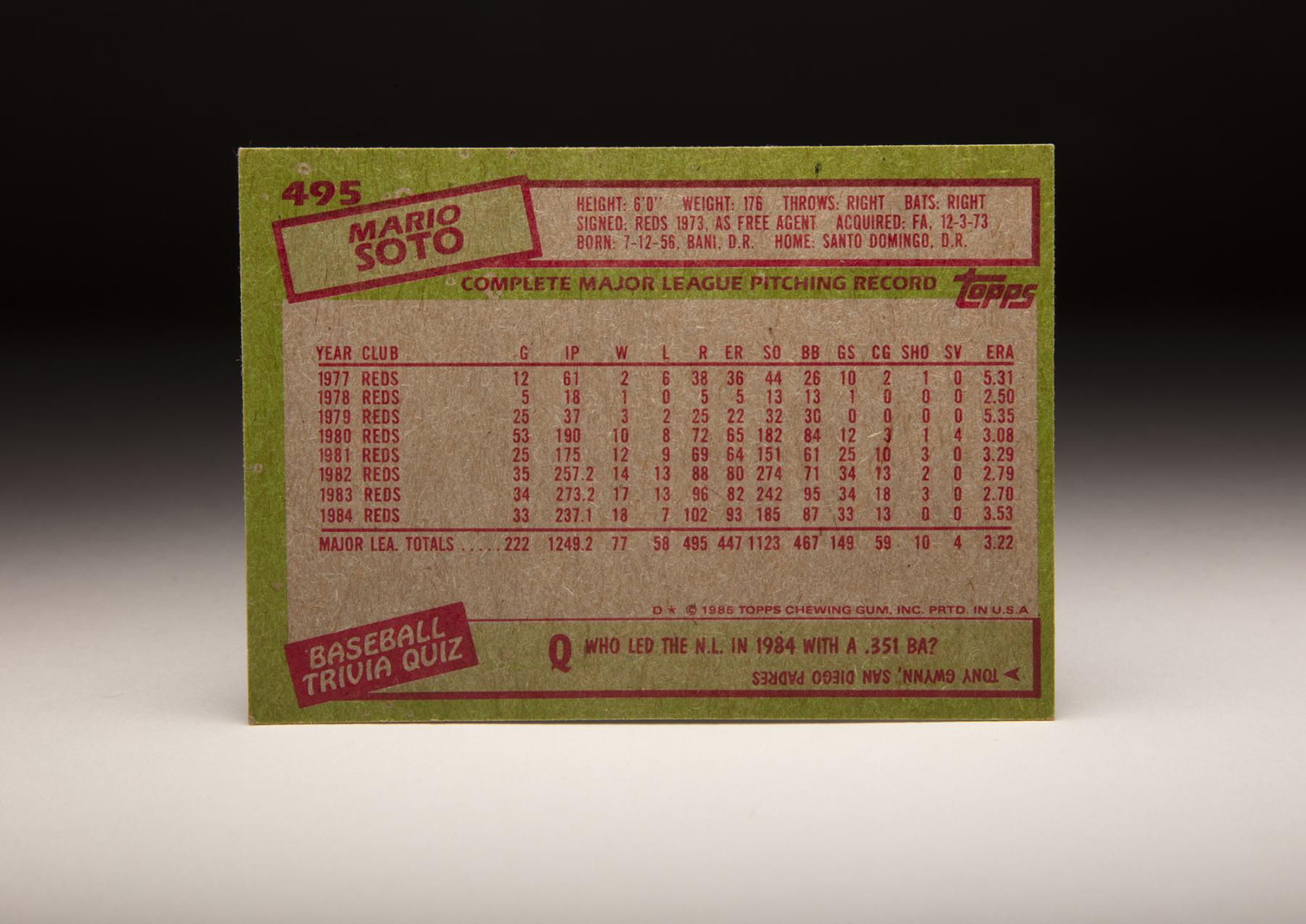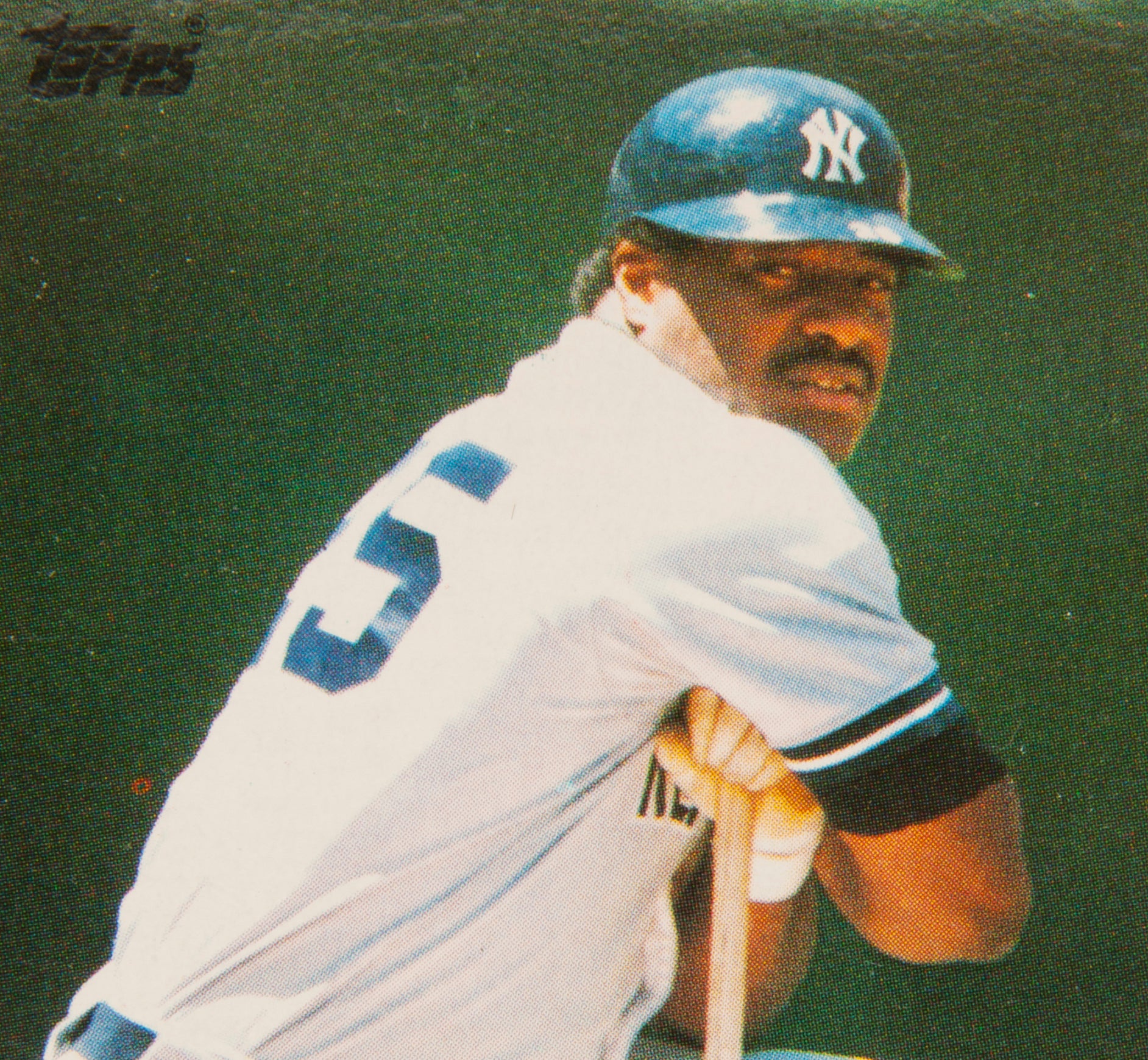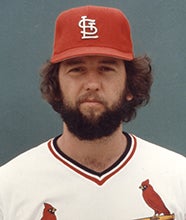- Home
- Our Stories
- #CardCorner: 1985 Topps Mario Soto
#CardCorner: 1985 Topps Mario Soto
He was a two-pitch pitcher, a designation that has long meant a bullpen role for big league hurlers.
But Mario Soto’s two pitches – a crackling mid-90s fastball and devastating change-up – were among the best in the business in the 1980s. So Mario Soto started 224 of his 297 big league games over a 12-year career with the Cincinnati Reds. And those two pitches repeatedly kept batters swinging and missing.
Hall of Fame Membership
There is no simpler, and more essential, way to demonstrate your support than to sign on as a Museum Member.
Born July 12, 1956, in Bani, Dominican Republic, Soto dreamed of the big leagues while playing youth baseball as a catcher and outfielder. He became a pitcher after learning a slider to go with his natural fastball, and the Dodgers appeared interested. But Soto remained a free agent until the Reds signed him on Dec. 3, 1973.
He didn’t pitch at all in 1974 and appeared in only five games in 1975 for the Class A Eugene Emeralds of the Northwest League as he battled a sore arm with an undiagnosed cause. Finally, it was determined Soto had broken his elbow at some unknown point.
He eschewed surgery in favor of whirlpool treatments and regained his fastball. But throwing a curveball or slider caused the pain to return.
In 1976, Soto went 13-7 with a 1.87 ERA for the Class A Tampa Tarpons of the Florida State League.
The next season, Soto was pitching well for Triple-A Indianapolis when the Reds called him to the big leagues at the age of 21. He made his big league debut on July 21, 1977, with two innings of relief work against the Pirates.
He was 2-6 with a 5.34 ERA over 12 games – including 10 starts – the rest of the season. The Reds told him he would need another pitch to succeed at the big leagues, and Soto spent most of the 1978 season with Indianapolis before a September call-up.
Then in winter ball following the 1978 season, Soto began experimenting with a new pitch.
“When I came to Spring Training in 1979,” Soto told the Dayton Daily News, “I had my change-up.”
Soto was 3-2 with a 5.30 ERA in 25 relief appearances with the Reds in 1979, spending time as a reliever with Indianapolis that year as well.
But by 1980, Soto had put everything together. That season, Soto was 10-8 with a 3.07 ERA in 52 games with the Reds, striking out 182 batters in 190.1 innings as a spot starter and reliever.
On Sept. 9, he struck out 15 Braves in a complete-game victory – and eight days later he shut out the Astros on five hits over nine innings.
In between, Soto worked two innings in relief on Sept. 13 against the Dodgers.
“Just give me the baseball,” Soto said when asked if he preferred starting or relieving, “and let me pitch.”
Soto led the NL with 8.6 strikeouts per nine innings worked in 1980 and was so effective in his swingman role that the earned a fifth-place finish in the NL Cy Young Award voting.
“Before Mario is finished,” Reds pitching coach Bill Fischer told the Dayton Daily News, “he may be the best pitcher in the league.”
Fischer proved to be correct. In 1981, Soto was 12-9 with a 3.29 ERA in an NL-leading 25 starts for a Reds team that won a big league-best 66 games but failed to make the playoffs in a season divided by a strike.
The next season, the Reds were 61-101 but Soto was 14-13 with a 2.79 ERA and 274 strikeouts to go with a league-leading WHIP of 1.060. He was named to the first of three career All-Star Games that season.
In 1983, Soto finished second to the Phillies’ John Denny in the NL Cy Young Award voting, going 17-13 with a 2.70 ERA and 242 strikeouts while earning the starting assignment in the All-Star Game.
He followed that up with an 18-7 season in 1984, posting a 3.53 ERA with 185 strikeouts.
On May 12, 1984, Soto came within one out of history.
He no-hit the Cardinals through 26 outs before George Hendrick hit a hanging change-up over the left field wall at Riverfront Stadium, ending the no-hit bid and tying the game at 1.
But Brad Gulden, who had called Soto’s gem from behind the plate, singled off Bruce Sutter to drive in Dave Concepcion in the bottom of the ninth to give Soto the win.
“I knew as soon as I threw the pitch,” Soto told the Cincinnati Enquirer of the ball that Hendrick hit for a home run, “that I was in trouble.”
In 1985, Soto was just 12-15, but his peripheral numbers – a 3.58 ERA, 1.169 WHIP and 215 strikeouts were very similar to his 18-win season of 1984.
But in 1986, shoulder injuries limited Soto to a 5-10 record in 19 starts – none coming after Aug. 15. After two more injury-shortened seasons where he appeared in just 20 total games, Soto’s career came to an end.
In 12 seasons – all with the Reds – Soto was 100-92 with a 3.47 ERA and 1,449 strikeouts in 1730.1 innings. He continued to work as a coach in the Reds’ organization following his playing days, teaching his lights-out change-up to a new generation of pitchers.
He pitched in the postseason only once – a two-inning stint in Game 3 of the NLCS vs. the Pirates. But for a generation of fans who followed the Reds between the 1975-76 and 1990 World Series teams, Mario Soto was the definition of a big game pitcher.
Craig Muder is the director of communications for the National Baseball Hall of Fame and Museum
Related Stories
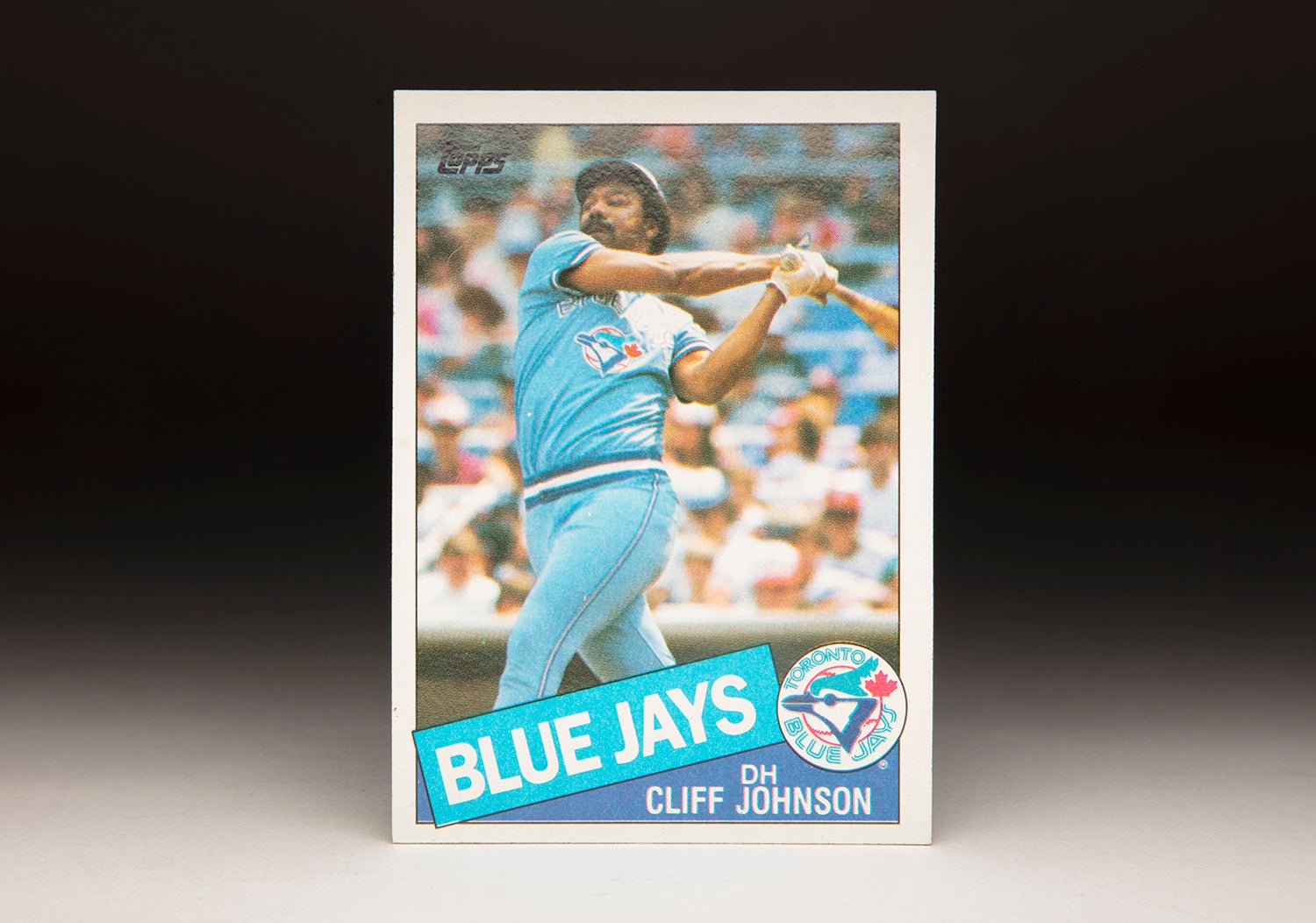
#CardCorner: 1985 Topps Cliff Johnson
#CardCorner: 1985 Topps Virgil Father-Son
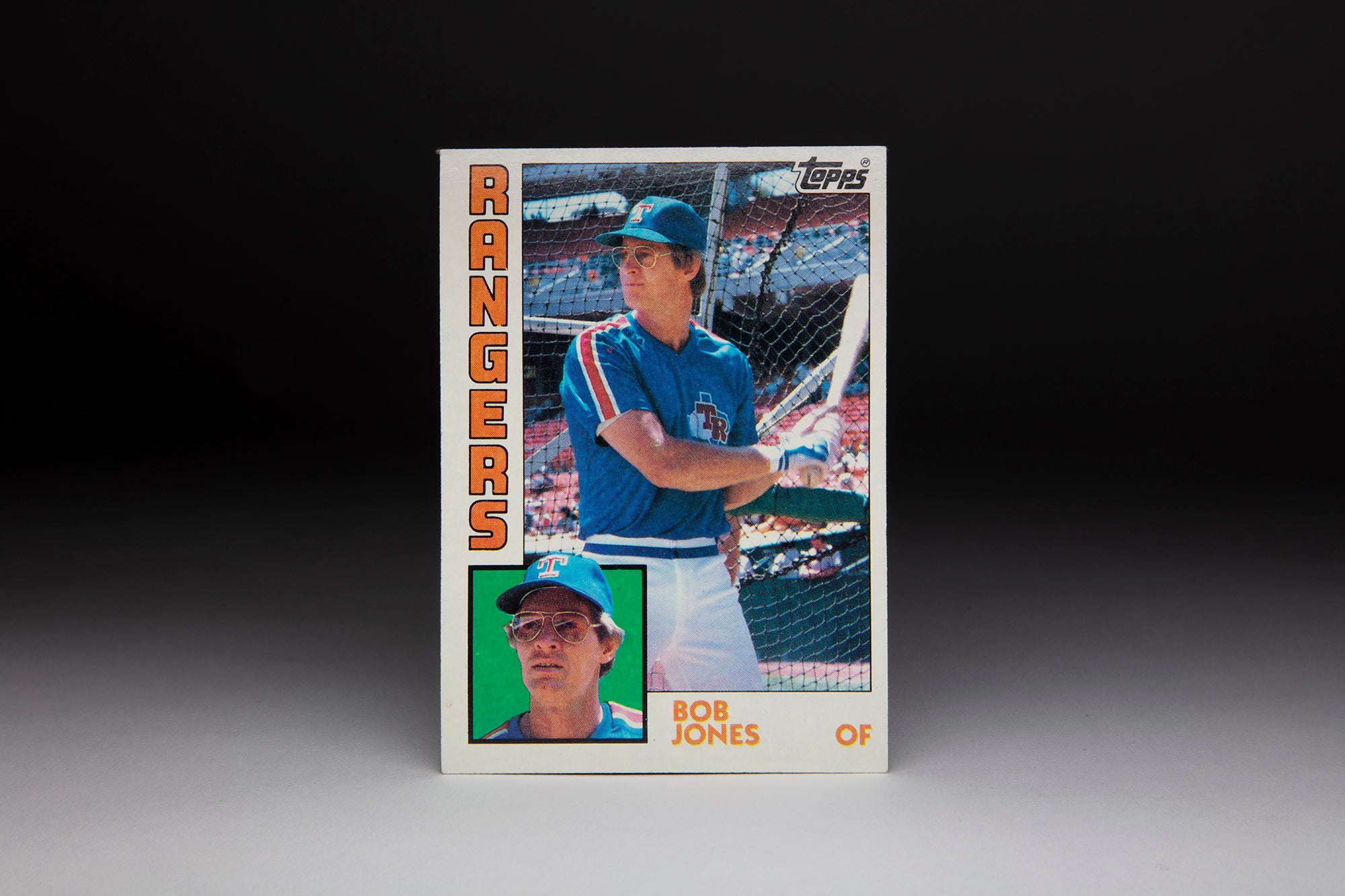
#CardCorner: 1984 Topps Bob Jones

#CardCorner: 1985 Topps Cliff Johnson
#CardCorner: 1985 Topps Virgil Father-Son



